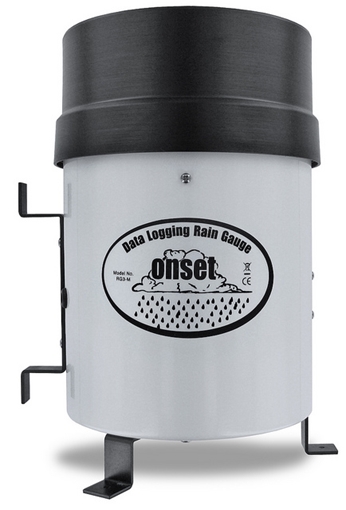Contrast the Leading Rain Gauge Designs for Accurate and Regular Readings
Contrast the Leading Rain Gauge Designs for Accurate and Regular Readings
Blog Article
Revealing the Science Behind Rainfall Evaluates: Exactly How These Tools Play an Essential Duty in Climate Study and Ecological Tracking
Rainfall evaluates, seemingly simple devices, hold a profound relevance in the realm of environment research study and environmental surveillance. These humble instruments silently gather one of nature's most necessary aspects-- rains. Behind their plain facade lies a complicated scientific research that is essential for recognizing the characteristics of our setting. As we peel back the layers of this clinical veil surrounding rainfall determines, we reveal a world where precision, information precision, and thorough monitoring assemble to unveil a much deeper understanding of our transforming climate and its effect on the earth.
Importance of Rain Gauges
Rainfall evaluates play a crucial function in tracking and determining precipitation levels, providing vital data for environment study and evaluation. These tools are essential in evaluating the amount of rains that happens in a particular area over a specific duration. By collecting and determining rain, rain assesses offer important insights right into the distribution and strength of rainfall, helping meteorologists, hydrologists, and climatologists in comprehending weather patterns and patterns.
Furthermore, lasting information gathered from rain assesses assists in assessing climate change influences and patterns, contributing substantially to clinical research and decision-making procedures. In significance, rainfall evaluates offer as essential tools in the area of meteorology and ecological science, playing an essential duty in advancing our understanding of weather and climate characteristics.
Sorts Of Rain Scales

Functionality and Procedure
In the realm of environment research and atmospheric studies, the performance of rainfall determines lies in their complex functionality and exact operational systems. Rainfall determines are created to accurately measure the amount of precipitation that falls over a certain area throughout a set duration.
The functionality of rainfall gauges is based upon the principle of gathering and gauging rainwater in a standard manner. This gathered advice information is essential for comprehending local weather condition patterns, tracking long-term climate fads, and evaluating ecological influences. To guarantee precise measurements, rainfall evaluates requirement to be strategically placed in open locations far from blockages such as buildings or trees that might hinder the collection procedure.
The operational aspect of rainfall determines involves routine maintenance to avoid debris accumulation, calibration checks to preserve measurement accuracy, and data recording for analysis (rain gauge). On the whole, the capability and operation of rainfall gauges are necessary for gathering trustworthy rainfall data crucial to environment study and environmental monitoring
Role in Climate Research
Given the crucial significance of accurate precipitation dimensions in understanding weather patterns and environmental impacts, the role of rain gauges in environment research is essential. click over here Rain determines give crucial information for climate research study by evaluating the quantity of precipitation that tips over a particular area during an offered duration. This information is critical for monitoring lasting fads in precipitation patterns, evaluating the effect of climate change on rainfall distribution, and boosting environment models.

Environment researchers make use of information collected from rainfall evaluates to assess variants in precipitation levels, recognize local climate fads, and assess the effectiveness of water source administration strategies. By contrasting historic rainfall data with present measurements, scientists can discover changes in precipitation patterns, such as modifications in the frequency or intensity of rains occasions. This information is important for understanding just how environment modification is influencing precipitation characteristics and can help policymakers make notified choices concerning adjustment and reduction techniques.
Applications in Ecological Surveillance

In flooding projecting, rain gauge data helps to track rains strength and circulation, permitting authorities to provide timely warnings and take necessary actions to minimize flooding risks (rain gauge). Dry spell surveillance relies upon rain gauge information to examine wetness levels in the dirt and track precipitation deficits, assisting in the recognition of drought-prone locations and the application of drought response approaches
Furthermore, rainfall gauge data plays a vital function in water resource administration by giving info on water availability and use patterns. Furthermore, in farming, rain scale data helps farmers in optimizing watering schedules, plant selection, and total farm administration practices based on neighborhood precipitation patterns.
Verdict
In conclusion, rain assesses are essential tools for measuring precipitation, giving useful information for environment study and ecological surveillance. With numerous kinds and capabilities, rainfall assesses play a critical role in understanding precipitation patterns and their effect on the environment. By accurately gauging rains, these gadgets contribute to the advancement of scientific knowledge and help in making educated choices associated to water resource administration and calamity readiness.
Rainfall evaluates play an important duty in tracking and measuring precipitation degrees, offering crucial data for climate study and evaluation. The standard rain gauge, known as the "tipping bucket" scale, is one of the most commonly utilized gadgets. read the full info here Ultrasonic rainfall determines usage noise waves to detect the existence of rainfall, supplying real-time data on precipitation levels.Environment researchers make use of data collected from rain evaluates to examine variants in precipitation degrees, identify local climate fads, and assess the efficiency of water resource administration techniques.In verdict, rain determines are necessary tools for determining precipitation, supplying valuable data for environment research and ecological monitoring.
Report this page